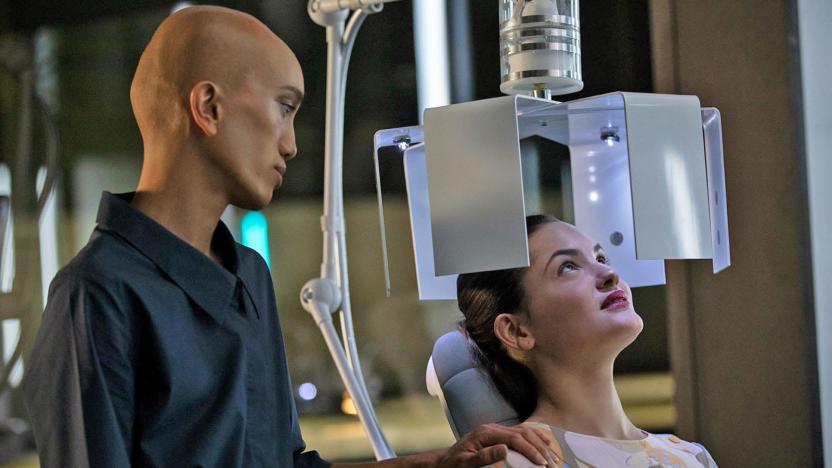osmosis
Latest

Netflix original ‘Osmosis’ is a dark take on AI date matching
If Netflix's new Dating Around reality series is a touch too maudlin for your taste, then you'll probably dig its upcoming French original Osmosis. The first trailer for the technophobic show, which premieres March 29th, just landed and it's a literal head trip. Set in a near future, it follows several young Parisians who sign up to a beta program for an experimental dating technology designed to pair up soul mates. Then things get dark.

Netflix's next original is basically a French 'Black Mirror'
One of the great things about Netflix's global expansion is that it allows audiences to enjoy new movies and TV shows that have been produced in other countries. French subscribers, for example, saw their first local original -- Marseille -- debut around this time last year. Today, as part of a wider statement confirming the creation of 400 new European jobs, Netflix announced that it has greenlit its second French-language TV series, Osmosis. Judging by the show's synopsis, fans of Charlie Brooker's Black Mirror could be in for a treat.

Space shuttle's final voyage will include recycling urine into sports drink, crafting hilarious brand name
Just because the space shuttle Atlantis is on its final mission, that doesn't mean NASA's run out of cool experiments. Its latest example? A shiny silver bag -- consciously inspired by the "stillsuits" from Frank Herbert's sci-fi classic, Dune -- that turns astronaut urine into potable drinking water. It's been done, you say? Sure, but the earlier tech relied on electricity: a precious commodity aboard the International Space Station. The Forward Osmosis Bag requires no outside power source, relying on, you guessed it, forward osmosis to produce clean, filtered water. Not only that, but the resulting water mixes with a sugary solution to make a electrolyte-rich sports drink. On Earth this process takes four to six hours, but Atlantis astronauts will test its viability in space near the end of their mission. For an extensive on-planet demonstration, see the video after the break.

Norway's Statkraft kick-starts world's first osmotic power plant
It may only produce enough power to heat an electric kettle at the moment, but Norway's Statkraft says that its new, first-of-its-kind osmotic power plant could be producing as much energy as a small wind farm by 2015, and continue to grow from there on out. To do that, the company guides fresh water and salt water into separate chambers that are divided by an artificial membrane, and when the process of osmosis takes place -- salt molecules pulling freshwater through the membrane -- the pressure is increased on the sea water side. That, of course, doesn't get you power on its own, but the pressure is apparently enough to drive a power generating turbine, and if you have enough of those you have a power plant. A bit of effort, to be sure, but the process doesn't emit any greenhouse gases, is completely renewable, and it doesn't depend on the wind or the sun being out.

NC State researchers devise new ways to invade your bloodstream
While schools in the ACC are certainly making noise on the hardwood, it seems that the Atlantic Coast Conference is also interested in shoving microbots all around your innards. Just days after a team from Georgia Tech envisioned a new internal method for monitoring blood pressure, research conducted at NC State is hoping to cram even more robotic creatures into deep, dark places within your body. A team led by Orlin Velev has discovered that "a simple electronic diode" could spark a new form of propulsion which could power robots and other diminutive devices from a distance. By exploiting "a phenomenon known as electro-osmosis," the diodes can push microscopic material through internal fluids "at speeds of several millimeters per second," which could allow cameras and medicines to reach critical locales that are presently isolated. Of course, there's still a good bit of work to be done, as the prototype device still has become substantially smaller before it will even fit in most of the tiny tubes within your skin, but it's looking more and more like we'll have nursebots shoving spinoffs of themselves into our beings before too long.[Via NewScientistTech]




